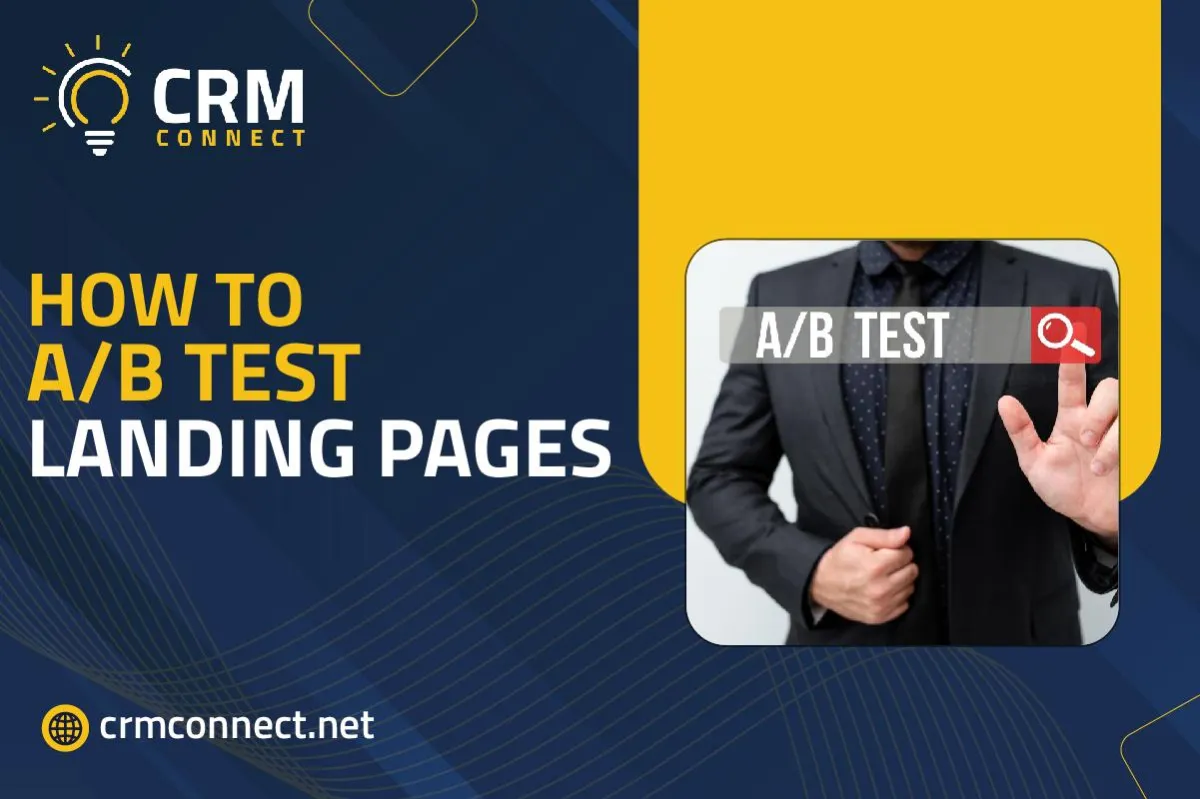
How to A/B Test Landing Pages & Why It Makes a Big Difference
Your landing page is where people decide whether to take action or leave. You don’t want to guess what works. That’s where A/B testing for landing pages comes in. It shows what changes help or hurt your success. With smart testing, small tweaks can lead to more signups, clicks, or sales.
So, what is A/B testing? Why is it of so much importance? And how can you conduct it? This guide walks you through landing page split testing and why it matters more than you think. Let’s start by getting a better idea of what A/B testing is.
What is A/B Testing and Why Should You Care?
Landing page A/B testing means creating two versions of a page to see which one works better. It's like a race between two pages. One may get more people to click, sign up, or buy. The goal is simple: stop guessing and A/B test landing pages based on proof.

The Importance of A/B Testing for Improving Conversion Rates
You might love your landing page, but your audience may not. Testing helps you see what’s truly working. With A/B testing landing pages, you can improve results without wasting traffic. A single headline or button color could change everything. It helps make the most of every visitor.
Step-by-Step Guide to A/B Testing Your Landing Pages
You don’t need a large team or a big budget. Just follow these steps. If you’re wondering how to do A/B testing on a website, this part breaks it down in plain steps so you can start today.
Step 1 - Choose One Element to Test
Start small. Test just one thing. It could be the headline, call-to-action, image, or even font size. The goal is to see if that change helps. If you test everything at once, you won’t know what made the difference.
Step 2 - Create Two Versions
Build a second version with just one change. This is your variation. The first version is your control. You now have what’s called an A/B split test. Both pages are now ready to go head-to-head.
Step 3 - Split Your Audience
Split your traffic so half see version A and half see version B. Many landing page testing tools do this for you. This step ensures fair results and helps avoid bias.
Step 4 - Run the Test
Let the test run long enough. A few hours is too short. Let enough people visit so the results are reliable. Otherwise, your decisions may be based on a lucky streak or random dips.
Step 5 - Analyze the Results
Which version won? Look at your goal. Did more people click a button? Did more people fill out the form? Tools can show you clear data so you don’t have to guess.
Step 6 - Implement the Winning Version
Once you know which version works better, use it. Then pick a new element to test. This is how real growth happens with one smart change at a time.
Best Tools to A/B Test Your Landing Pages
You don’t need to code everything by hand. Many tools help you test landing pages quickly. These make website split testing easier for teams of any size.
Google Optimize
Google Optimize was free and easy to use. It allowed you to create split test landing pages and measure results. While it’s no longer supported, many tools now offer similar features with simpler steps.
Optimizely
Optimizely is known for being simple and powerful. It’s great for testing many things at once. If you want deep testing options and clear reports, it’s a solid pick for A/B testing vs split testing needs.
VWO (Visual Website Optimizer)
VWO makes it easy to see and test elements without touching code. You just click what you want to change. It’s perfect if you’re just starting landing page a/b testing.
CRM Connect
CRM Connect isn’t just a CRM; it’s also a landing page testing tool. If you're already using landing page tools, CRM Connect makes testing faster with built-in A/B testing landing page features.
How A/B Testing Can Dramatically Boost Landing Page Performance
Testing gives you real proof. You stop guessing and start doing what actually works. This leads to growth. Here’s how A/B testing landing pages helps you move forward.
Data-Driven Decisions
Testing shows which version works by analyzing the data. Your team can agree on changes based on numbers, not opinions.
Improved User Experience
Visitors find what they need faster. A smoother experience keeps them engaged longer. This helps you build trust and increase action.
Higher Conversion Rates
With each test, you get closer to what your visitors want. That leads to more signups, clicks, and purchases. Every win counts.
Reduced Bounce Rates
If people leave quickly, something’s off. Testing helps you fix those blind spots. Better pages keep people around longer.
Competitive Advantage
Many companies guess. You won’t. You’ll grow based on facts. That’s how you stay ahead, even if your budget isn’t big.
Why You Need to A/B Test Your Landing Pages
No matter what your business sells or offers, testing your pages helps you get more out of the same traffic. These benefits show why A/B testing your website should be part of your regular plan:
More leads without spending more on ads
Better insight into what your audience likes
Faster changes based on proof
Stronger return on each marketing dollar
Smarter campaigns over time
One important thing to note is that you don’t make too much at once. You’ll get unclear results. Stick to one thing. Use split testing landing pages tools with built-in tracking. Let tests run for at least a week, or until you have 100 conversions.
Don’t stop early, even if one version looks like it’s winning. That’s how false wins happen. Always double-check your sample size before calling a winner.
Wrapping Up
Landing page A/B testing isn’t a trick; it’s a smart habit. Each test brings you closer to better results. You get more clicks, which eventually gives you more leads. In short, it ensures that your business gets more wins, backed by data.
Try the CRM Connect demo today for free and see how easy it is to start testing your landing pages with zero fuss and full support.




